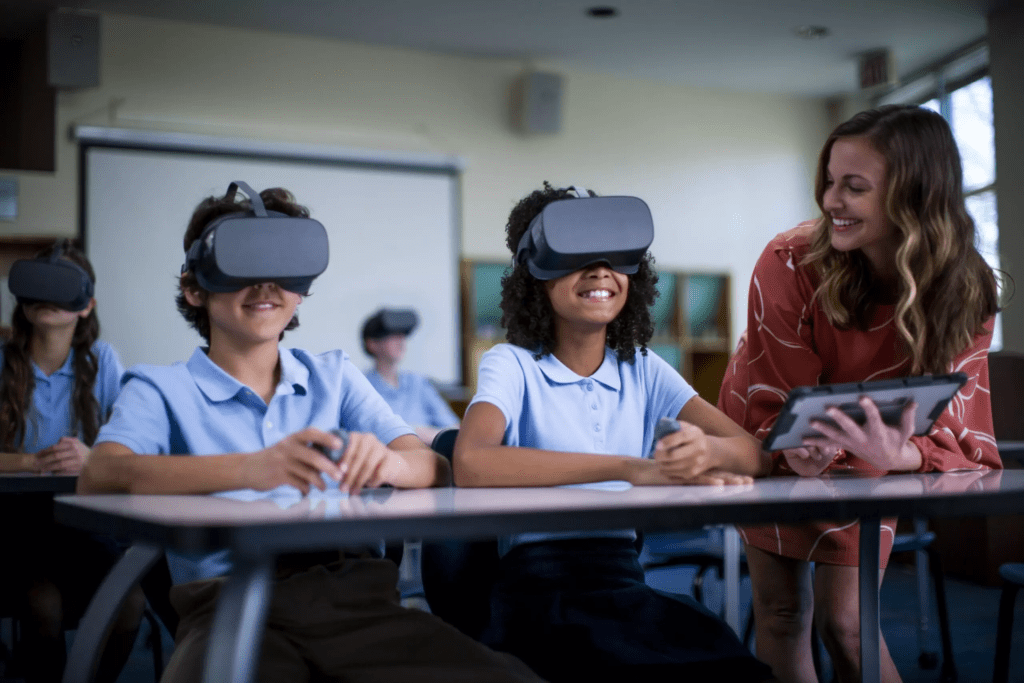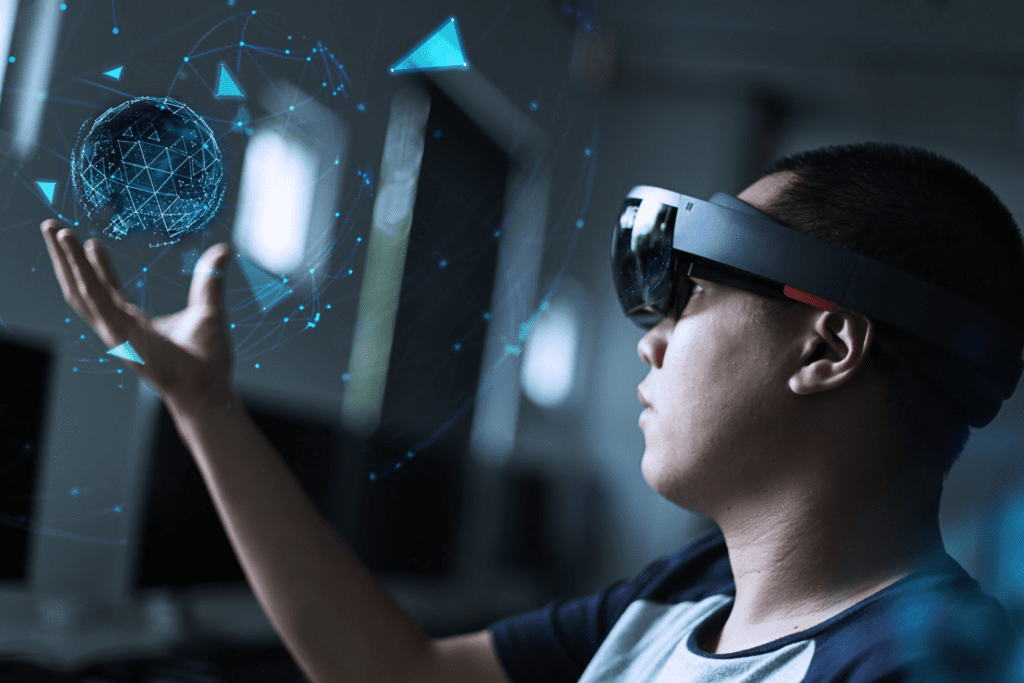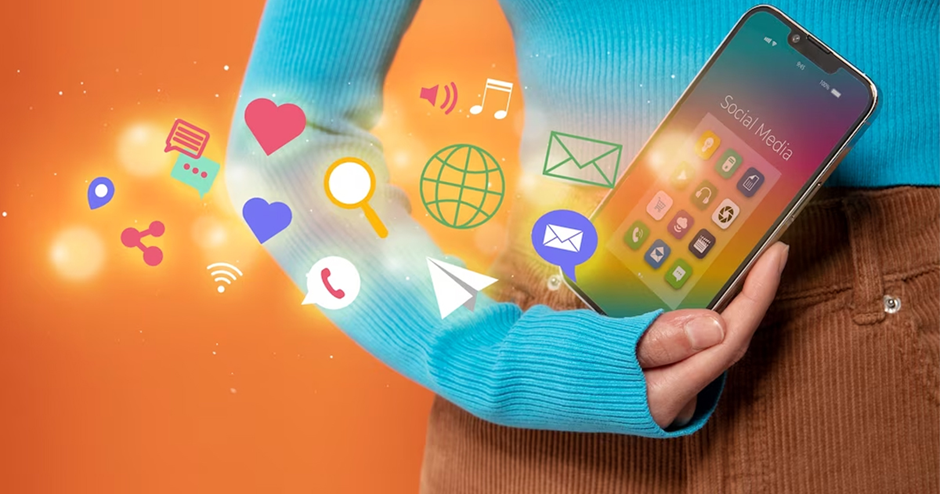Virtual Reality (VR) has quickly transformed from a specialized technology to a potent tool with the ability to create significant change in different industries. Education is one of the most promising areas for VR advancements. Through placing learners in interactive and dynamic virtual environments, VR is changing how information is presented and learned. This article delves into how virtual reality is improving learning experiences, its advantages, difficulties, and potential future developments in the education industry.

Understanding Virtual Reality in Education
Virtual Reality is a simulated environment created by computers where individuals can engage with a 3D world through specific tools like VR headsets and controllers. VR offers an interactive and fully immersive learning experience, in contrast to the passive learning style of textbooks and lectures commonly found in traditional education. Students have the opportunity to interact with virtual environments, control items, and participate in situations that simulate real-life experiences, enhancing the effectiveness and engagement of learning.
The main draw of VR in education is its capacity to provide hands-on learning experiences. Through exposing students to virtual environments, VR enables them to engage with intricate concepts and scenarios in a tactile way. For example, rather than just reading about historical events, students have the opportunity to virtually explore historical sites and observe events in real time. Likewise, intricate scientific ideas can be represented visually and explored in ways that are hard to achieve using conventional techniques.
Enhancing Engagement and Motivation
VR in education is advantageous because it can improve student involvement and drive. Traditional teaching approaches may find it challenging to engage and sustain students’ interest, particularly in abstract or visually challenging subjects. On the flip side, VR provides a captivating and interactive educational setting that can grab students’ focus and spark their interest.
When students actively engage in the learning process, they are more likely to remember information and gain a better comprehension of the subject matter. VR interactions are made to be both visually and interactively exciting, enhancing the learning process and making it more engaging and memorable. For instance, within a virtual reality simulation of a space mission, students can simulate navigating through space, conducting scientific experiments, and resolving real-time problems. This interactive method not just enhances learning excitement but also aids in developing students’ hands-on skills and problem-solving capabilities.
Supporting Diverse Learning Styles
Each student possesses an individual learning method, and virtual reality provides a flexible platform to cater to different choices. Visual learners, who learn best through images and videos, can take advantage of the immersive visual experiences offered by VR. Auditory learners, who learn by listening, can interact with narrated content and engaging audio features. Kinesthetic learners can engage with virtual objects and take part in simulations that necessitate bodily movement.
VR can enhance educational experiences by accommodating diverse learning methods, leading to a more customized and inclusive approach. In a virtual anatomy lab, students have the opportunity to examine the human body in 3D, observe intricate structures, and interact with virtual organs. This method enables students to learn at their own speed and review information as necessary, promoting personalized learning and cultivating a deeper comprehension of challenging subjects.
Providing Experiential Learning Opportunities
Learning through firsthand experience and reflection is an important aspect of successful education – known as experiential learning. VR provides distinct chances for hands-on learning through realistic simulations and scenarios that may be too difficult or impossible to achieve in real life. This practical method assists students in enhancing their critical thinking skills, problem-solving capabilities, and gaining a deeper comprehension of the subject.
In sectors like healthcare, virtual reality simulations offer medical students lifelike training scenarios covering surgeries, patient interactions, and diagnostic procedures. These virtual scenarios enable students to improve and perfect their abilities in a supervised setting, boosting their proficiency and self-assurance. In vocational training programs, VR can also replicate real-world job tasks and environments, aiding students in acquiring hands-on experience and getting ready for their future jobs.
Facilitating Remote and Distance Learning
With education shifting more towards remote and distance learning, VR provides a useful tool to connect students and educators. VR has the ability to form virtual educational settings where students and educators can engage in live interactions, work together on tasks, and experience in-depth learning activities. This technology bridges geographical gaps, offering quality education to students without access to traditional schools.
Besides virtual classrooms, virtual reality (VR) can also support virtual field trips and excursions, enabling students to visit remote locations and cultural sites without departing from their homes. For example, students have the opportunity to virtually explore ancient ruins, tour international museums, and witness natural wonders worldwide. These digital experiences enhance the curriculum and offer students a wider view of international subjects.
Enhancing Collaboration and Teamwork
Cooperation and working together are crucial abilities in academic and professional environments. VR has the ability to improve collaborative learning through interactive settings that allow students to collaborate on tasks, address challenges, and participate in collective tasks. Virtual spaces enable students to work together instantly, exchange ideas, and create connections with classmates, no matter where they are.
In a virtual science lab, students have the ability to collaborate on experiments, review data, and share their findings. VR simulations can also help with team challenges and competitions, promoting a feeling of friendship and inspiring collaborative learning. VR assists students in gaining teamwork skills and preparing for future collaborative projects by offering chances for collaboration in a virtual environment.

Overcoming Limitations and Barriers
Even though VR has potential, there are challenges and limitations to integrating it into education. The cost of VR hardware and software is a major obstacle. Top-notch VR equipment including headsets, controllers, and computers can come with a hefty price tag, posing a financial challenge for certain schools looking to incorporate this technology. Moreover, specialized skills and resources are necessary for creating and managing VR content, leading to additional expenses.
Another difficulty that exists is the requirement of sufficient training and assistance for teachers. Educators need to know about VR technology and how to incorporate it into their teaching methods. Professional development and training are crucial for educators to maximize the potential of VR and offer valuable learning experiences for students.
Challenges are also presented by technical problems and accessibility issues. Virtual reality technology depends on advanced hardware and software, and issues like connectivity problems, software bugs, or hardware failures can interrupt the learning process. It is crucial to maintain a positive educational environment by ensuring reliable and well-supported VR systems.
Furthermore, although VR provides immersive experiences, it may not be appropriate for all learning goals or subjects. Certain ideas might be more appropriate for conventional educational approaches or alternative technological tools. Assessing the impact of VR individually and recognizing its role in improving current educational methods is crucial.
The Future of VR in Education
The progress of VR technology suggests it will increasingly transform education. Improvements in VR technology, including hardware, software, and content creation, are set to improve virtual learning experiences in terms of quality and accessibility. For instance, advancements in VR headset technology like improved resolution screens, enhanced tracking, and more ergonomic designs will enhance the engagement and usability of VR.
The advancement of more complex VR content and applications will also play a role in the expansion of VR in the field of education. Educational organizations, creators of content, and developers of technology are set to work together in order to produce engaging and interactive learning opportunities that cover various topics and educational goals. AI and machine learning combined with VR can improve personalized learning, adjust content to individual needs, and offer immediate feedback to students.
In addition to technological progress, the future of VR in education will focus on tackling existing issues and discovering new ways for integration. Ongoing research and assessment will assist in discovering optimal methods for incorporating VR in educational environments and assessing its effects on educational achievements. Collaboration among educators, technology providers, and policymakers is essential in creating successful strategies and ensuring VR technology is utilized to benefit every student.

Conclusion
Virtual Reality is on the brink of revolutionizing education through providing immersive, interactive, and engaging learning opportunities. VR has the ability to transform the way information is taught and learned by increasing involvement, catering to different learning preferences, offering hands-on learning experiences, and enabling distance learning. Despite the need to address challenges such as cost, technical issues, and accessibility, the potential for VR in education appears to be bright.
With the continued development of technology, virtual reality is expected to have a growing impact on the future of education. By embracing VR’s potential and investigating its uses, educators and students can discover fresh chances for learning and development. Incorporating VR into education has the capability to generate more interactive, customized, and influential learning opportunities, leading to a fresh period of educational creativity.


